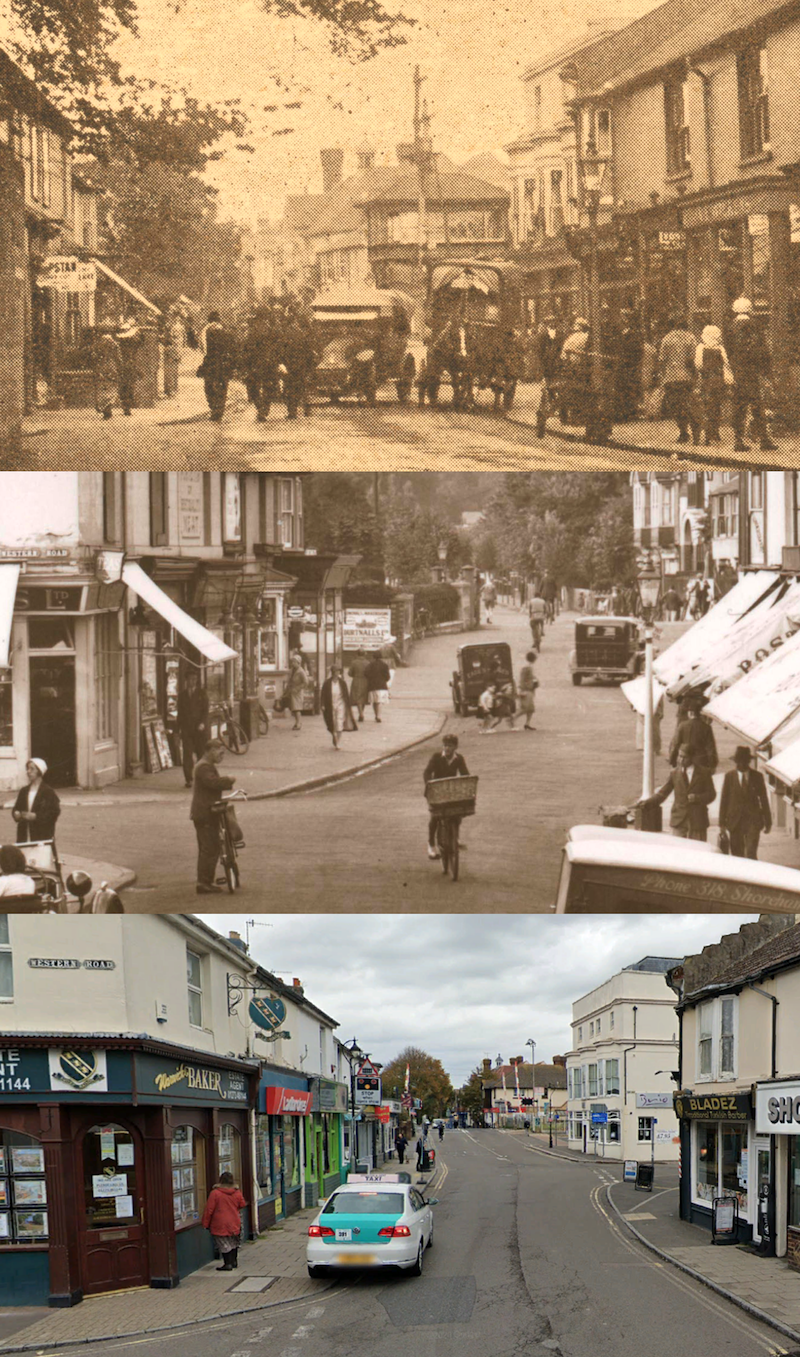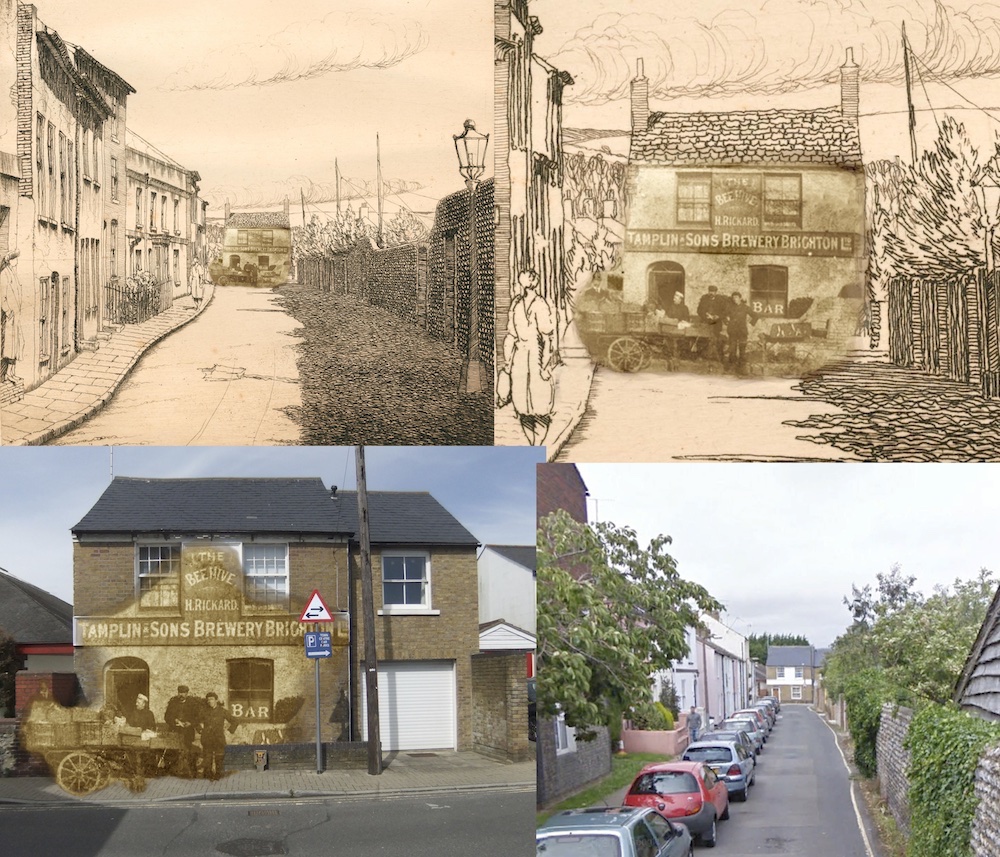
Brunswick Road over the decades
Brook Harrison comparison
Brook Harrison’s circa 1920’s paintings:-
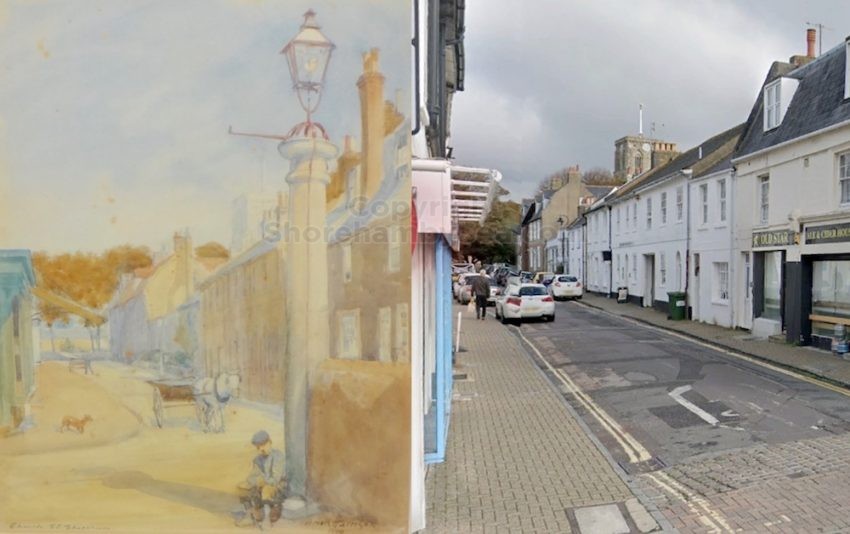
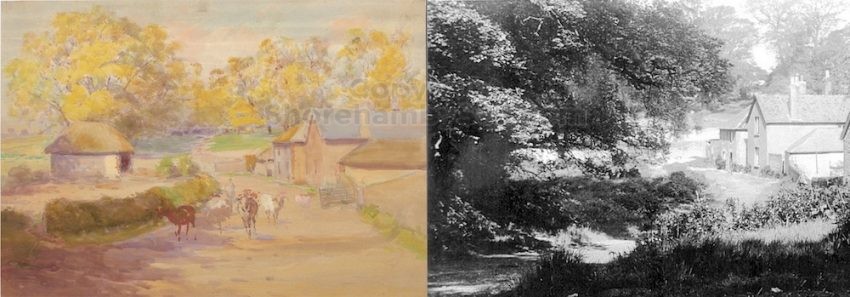
To see some of Brook Harison’s Shoreham paintings visit here.
Concrete storage vessel
In a forum post concerning the Kingston Bridge there was mention of a concrete ship used for storage. I checked back on old posts and photographs and found this that shows a ship shape on the ground alongside the Brighton Road.
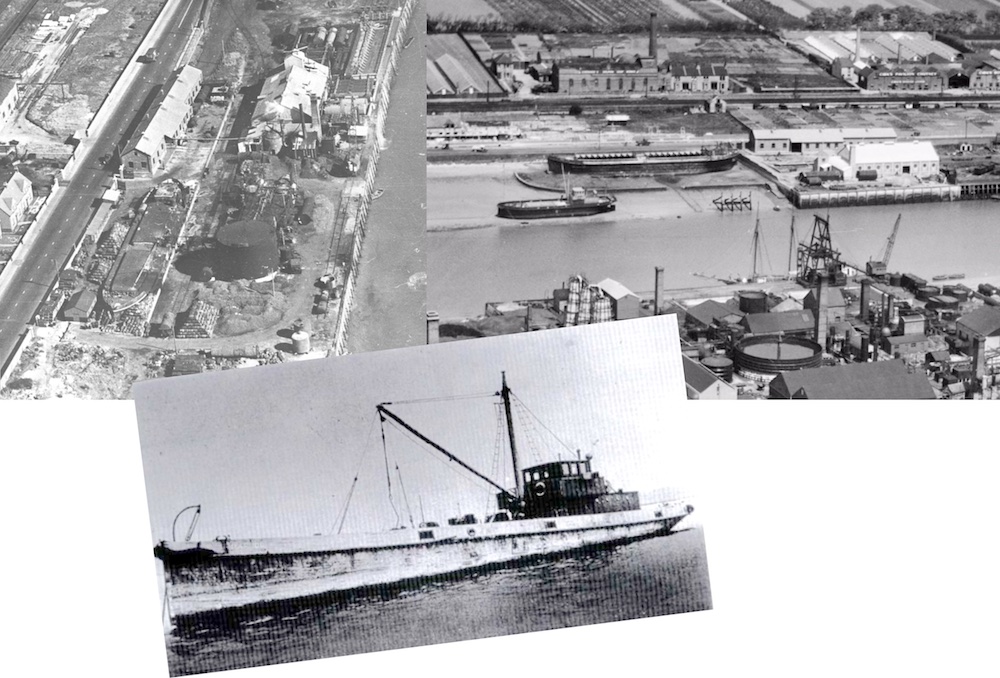
Last snaps of Kingston
We’ve seen the black & white photos of the Kingston 18th century buildings and others at the time of their demolishing but here are a few coloured snaps that despite their dilapidated condition look almost attractive due to the colouring. Some will remember the café, a convenient rendezvous spot for local bikers due to the ample parking in the gap between it and the Kingston Inn.
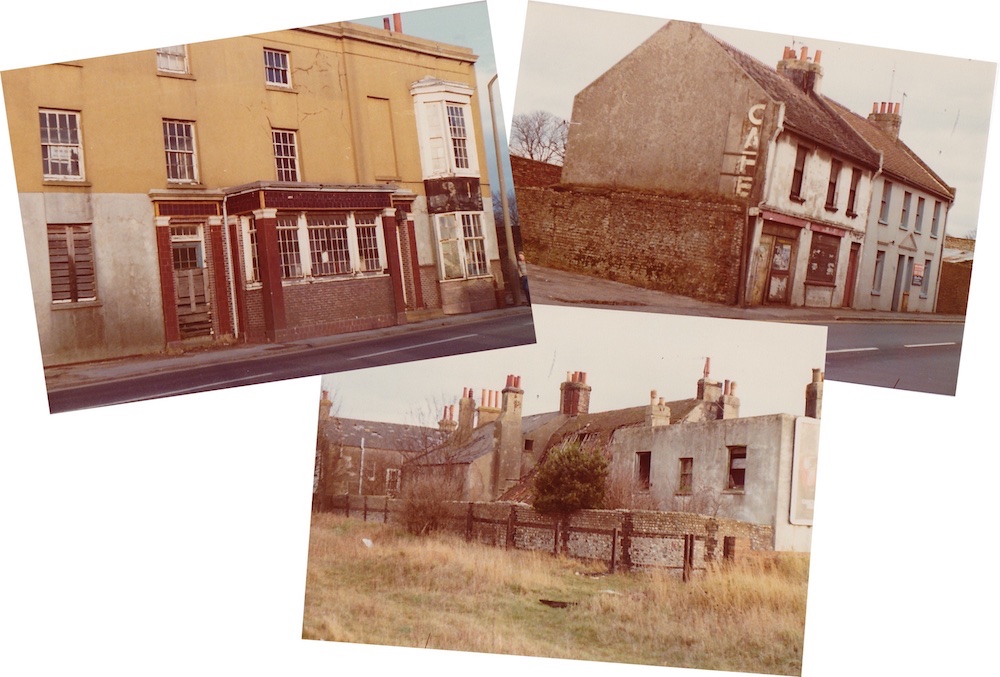
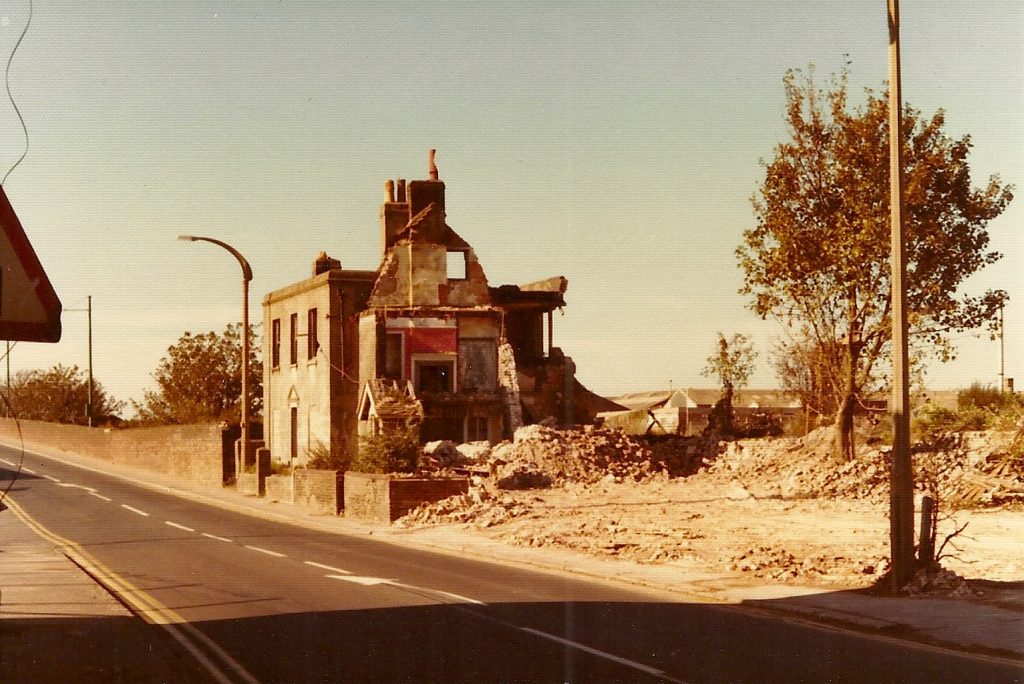
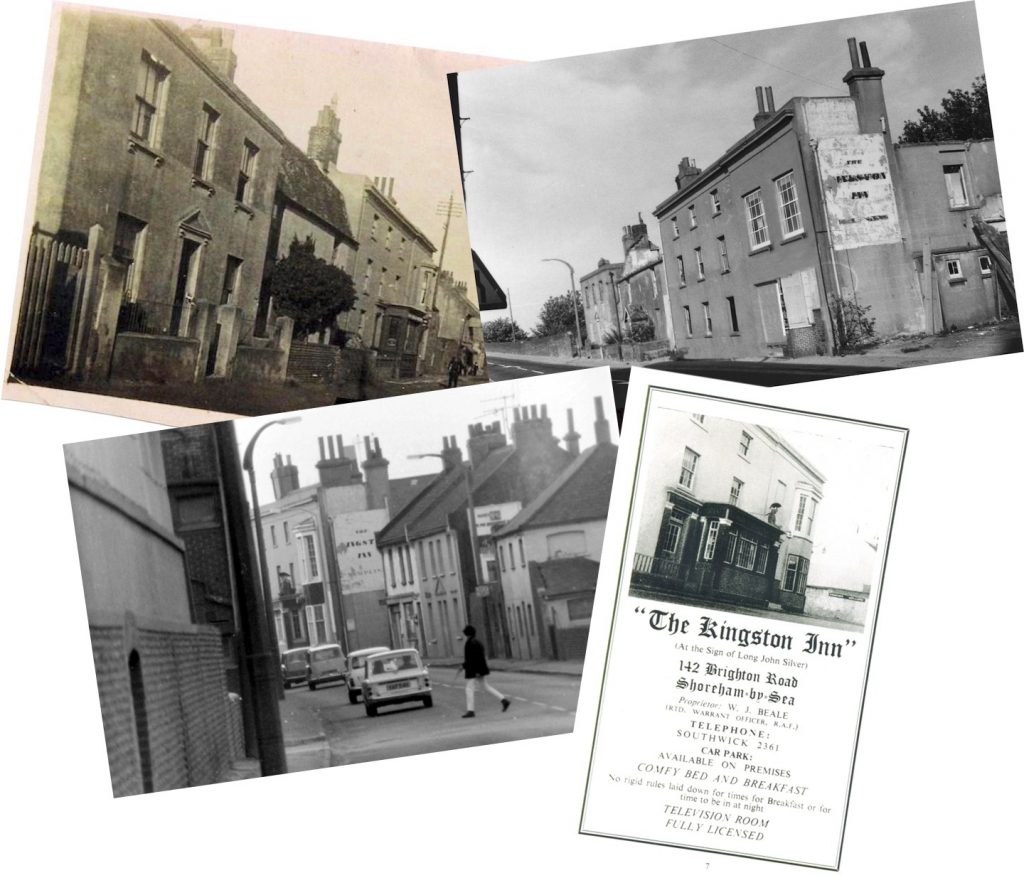
Day out to Bramber
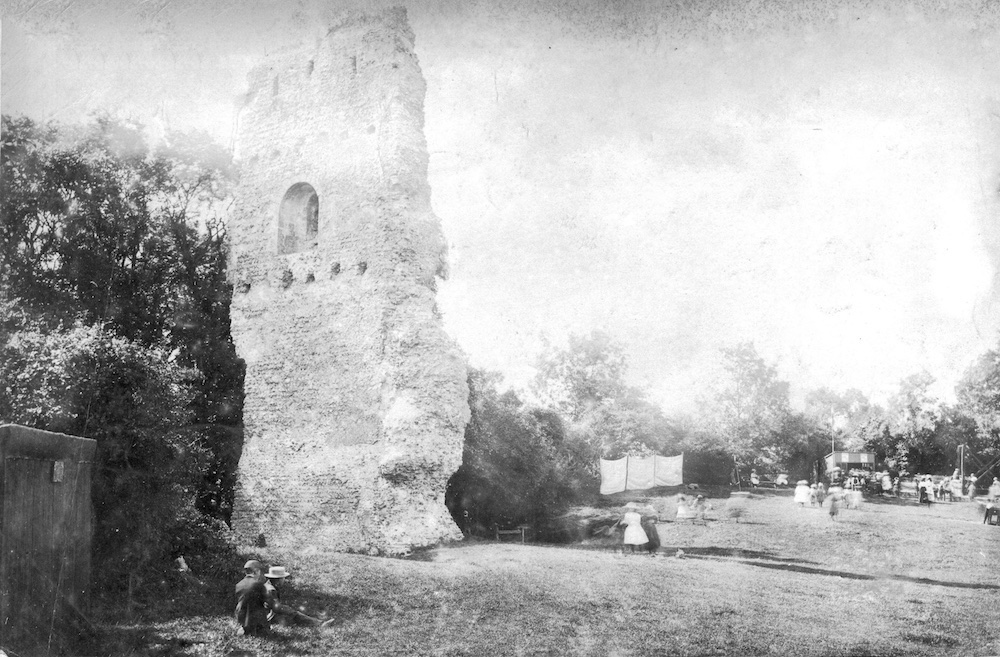
For me this photo (from the Winton Collection) is a fascinating record of the days when visits were organised for children from Shoreham and elsewhere that involved an exciting journey on the train to Bramber Castle and sometimes included modest fairground-like entertainment, stalls and swings etc.,
70 years apart
About 70 years between these two photos (c.1912 & 1980’s) not a precisely exact match but close enough for it to have been a near miss if both aircraft had been flying at the same time.
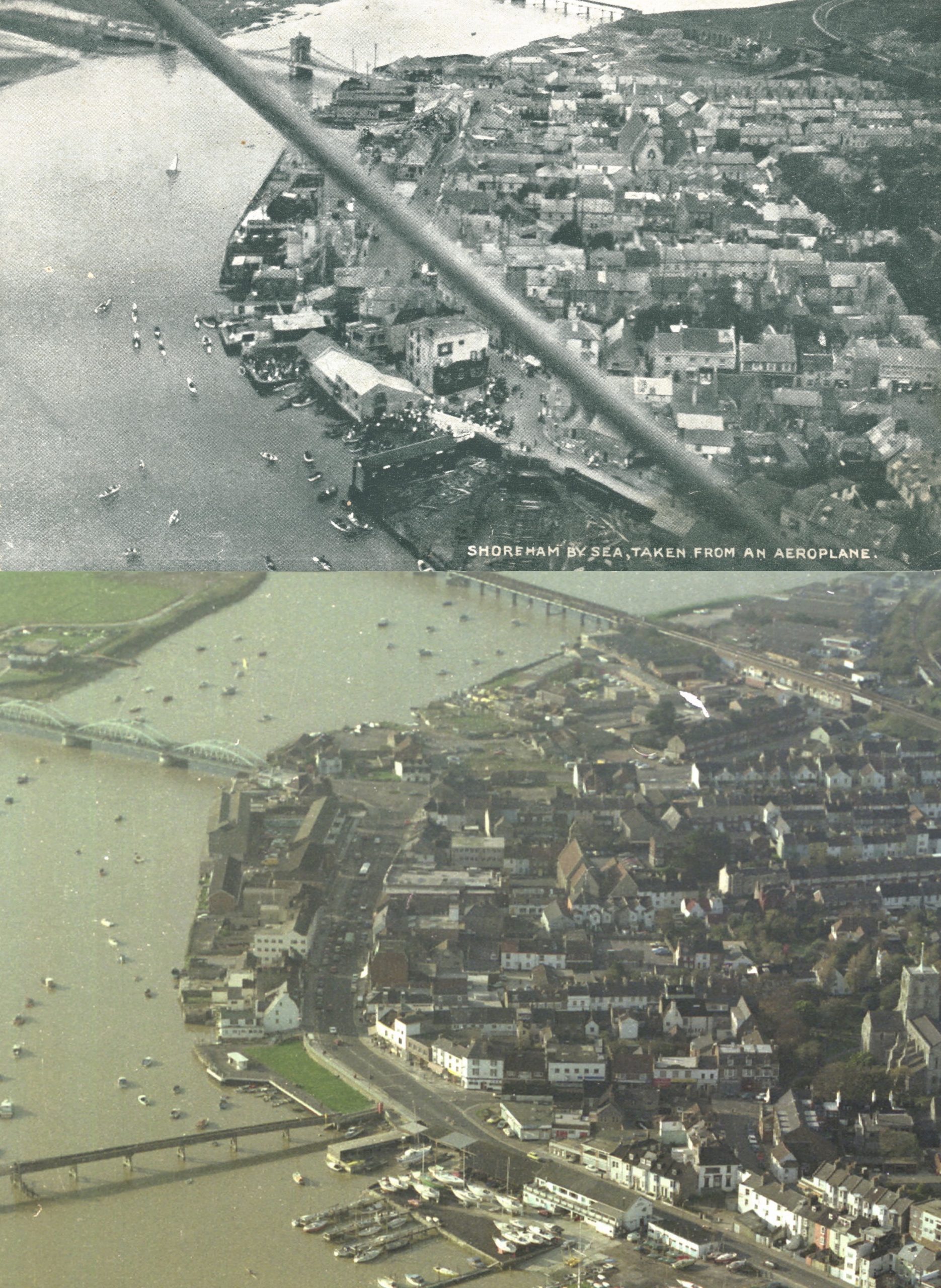
The Sussex Aero Club
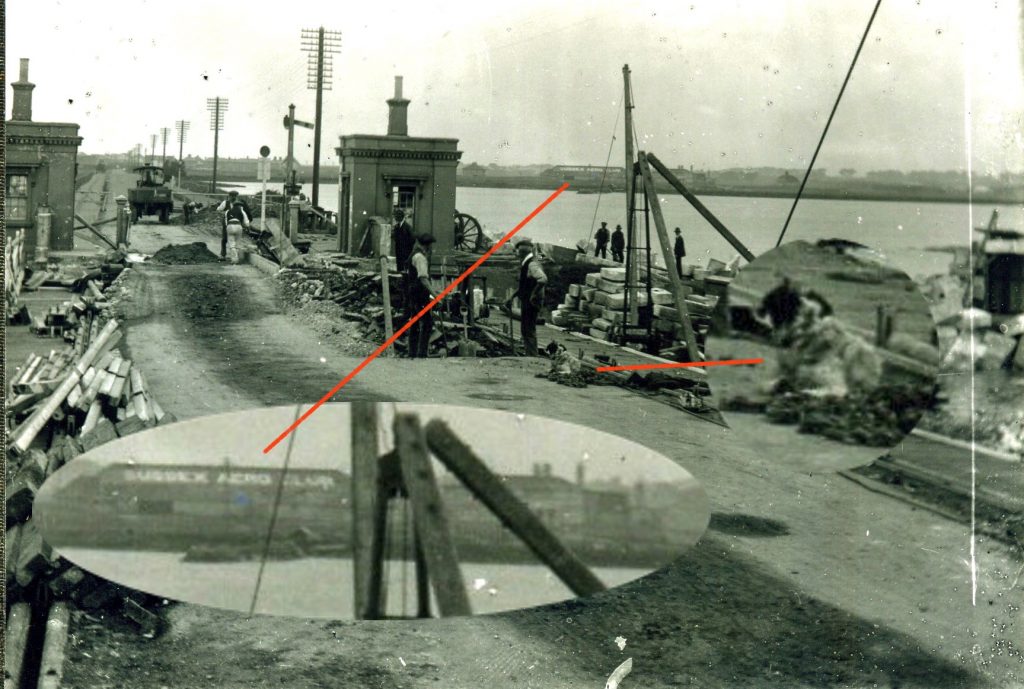
A little bit of hidden history in this photo. ‘The Sussex Aero Club’ painted on the roof of the barn next to New Salts farmhouse and the demolition of the original Norfolk Bridge tells us this is 1922 – a year when the airport was not in use and aircraft flew from Easters Field behind the barn.
Lofty adds:
Notice the railway-type signal at the approach to the bridge. This is operated via a chain that runs down the side of the signal and into the pavement.
I have always wondered – was this signal controlled from the nearby office/booth, or from the similar building located at the other (east) end of the bridge, thus allowing one-man operation to control the traffic ?
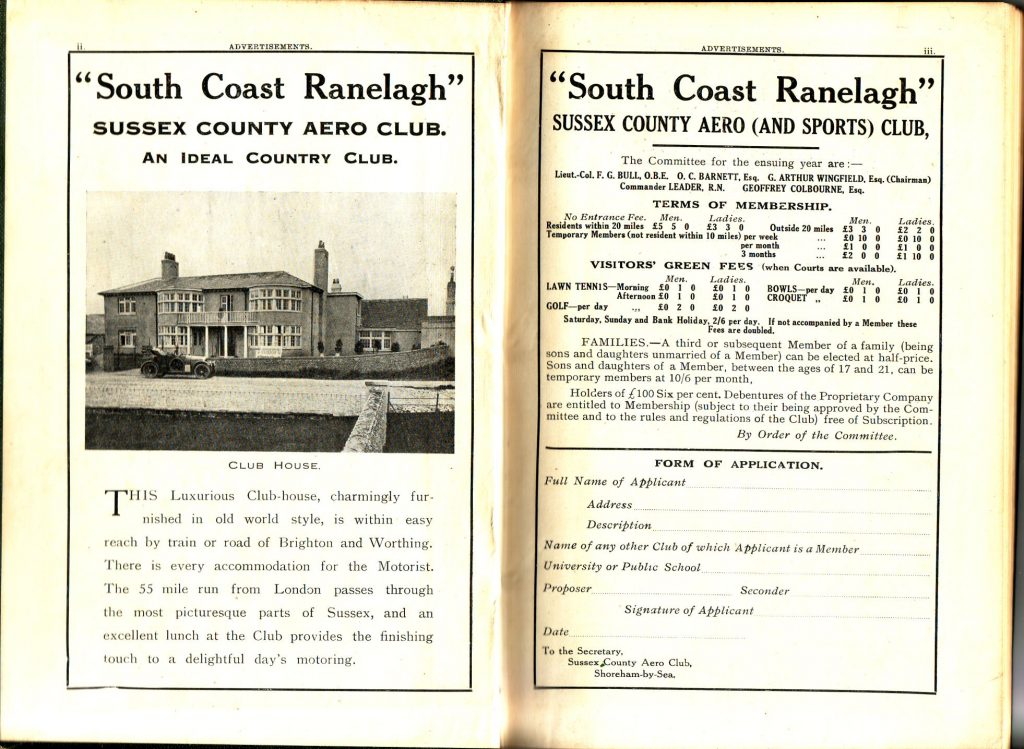
Mystery dock
Nelson writes:
Had some fun trying to identify the location of an old-ish painting recently (top left). The building on the right looks to be wooden. There is a finger of land in the centre foreground. There seems to be an opening to the river (centre right) that has been blocked off by timber work. If that is the Church of the Good Shepherd in the distance then perhaps we are looking from the old shipyards and shed on the right?
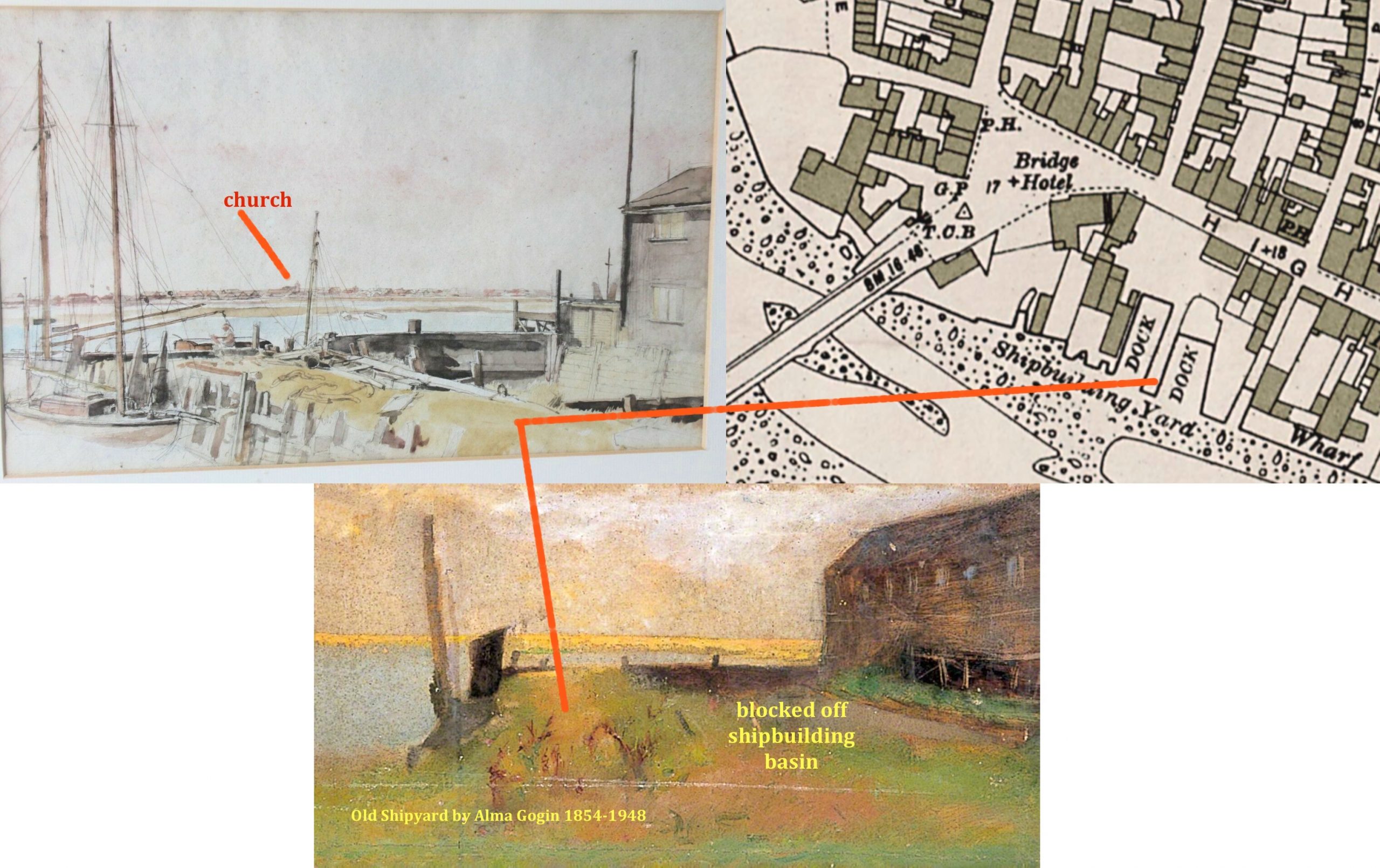
Football 1900’s
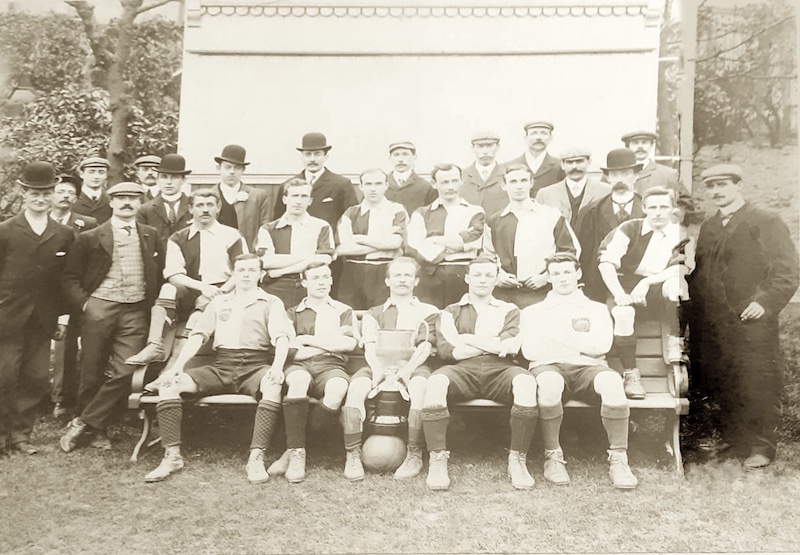
Nelson writes:
This photo has just come to light and we’ve identified most of the Shoreham FC players and the manager. The cup is the Royal Irish Rifles (later Royal Ulster Rifes) Charity Cup that Shoreham won twice. In 1903 when the RUR final was played at the Oxen Field (Windlesham Gardens area) and again in 1906 when it was played at the Goldstone Ground. The background more matches the Oxen Field I think added to which the players look a few years younger in that photo than those of later years so the photo is likely to be the Oxen Field in 1903



